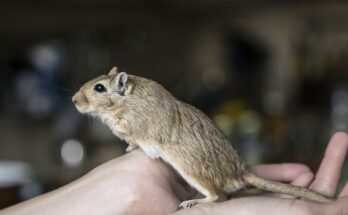If you are considering adopting a cockatiel, there are few colors as beautiful and rare as blue. Unfortunately, this beautiful bird is difficult to find and does not have the same markings as the more common colors, making it even more desirable. Read on to learn more about this amazing cockatiel.
Cockatiels are among the most popular pet birds in the world, and it’s not hard to see why. They are social, affectionate, and borderline crazy. They are also good pipers. And male cockatiels have a reputation for serenading their favorite people, friends, and even their reflection.
These birds are busy playing and flying in their cages or rooms and will take the time to sit on your shoulder to remind you how much they love you.
Blue cockatiels are simply cockatiels with a blue color. Still, they are rare because the vast majority of cockatiels are gray; The blue color is the result of a gene mutation.
Living Of Blue Cockatiel:
In addition, they can sometimes even be kept in apartments or shared apartments because they are quieter than other parrots. But if you’re worried about your cockatiel making too much noise, you should consider adopting a female instead. Males can be very vocal and their screams can be heard from afar, especially in the morning.
Cockatiels are currently the second most popular cage bird after parakeets.
Formal recognition of the Blue Cockatiel
Because the cockatiel is such a popular species, several clubs and societies have been formed to not only celebrate but also exhibit them.

The National Cockatiel Society exhibit is one of the largest. It promotes the ownership, exhibition, and breeding of whale flocks. Their website lists dozens of upcoming and past shows and shows specifically for cockatiels in states like California, North Carolina, and many in between.
In the cockatiel’s home country of Australia, the Native Cockatiel Society of Australia Inc. is dedicated to the care and breeding of cockatiels. They offer member meetings, guest speakers, table showers, and more.
Facts About Blue Cockatiel:
Is the Blue Cockatiel a good pet?
Regardless of their color, seals make great pets. After all, there is a reason why they are one of the most common pet bird species.
There are 4 unique facts about the blue cockatiel
- Cockatiels cannot be exported from Australia
In 1894, Australia banned the export of all wild seals from the country. This means that every pack of whales found anywhere else in the world has been domestically bred. Fortunately, unlike most of their parrot relatives, whales reproduce readily in captivity. - Color mutations in cockatiels were first discovered in the 1950s
Although cockatiels were discovered as a species in the 18th century, the first known color mutations did not appear until the 1960s. When breeders realized how different their birds could be, they began selective breeding to achieve specific patterns and colors. - Some cockatiels can talk
Although birds such as the African, African parrot, or the Amazon parrot get the limelight when it comes to talking bird species, some pods of whales can learn to imitate speech. Male cockatiels are likely to produce more complex sounds and whistles than their female counterparts. This is simply because they use their voice to woo the ladies during the breeding season. - Cockatiels can learn to repeat syllables and imitate certain parts of speech. Of course, its speech will not sound as clear and concise as that of an African gray parrot, but with a little time and patience, you should be able to understand your parakeet’s words.
- A cockatiel’s comb can tell about its mood
The cockatiel’s distinctive crest acts as a mood indicator. It is vertical when the bird is excited or frightened, diagonal when in a relaxed state, or flat on the head when excited or angry. When trying to woo a mate, you can leave the top flat but stick out the back.

Friendly Behaviour:
They are friendly, curious, loving, and good companions. Cockatiels are very entertaining because they are predictable and most people love a good dance lesson. If you have a husband, you will probably be sung to and even teach him to say a few words. They generally enjoy being handled and have good relationships with their human family members.
The downside is that cockatiels produce much more dust than other pet birds. This depends on how they grow and care for their feathers. Therefore, if you have a cockatiel at home, you will probably need to do a lot more dusting.
Species overview:

Common names: Blue Cockatiel
Scientific name: Nymphicus hollandicus
Adult size: 12-13 inches long
Expected lifespan: 15-25 years.
Diploma:
Regardless of color, cockatiels are beautiful birds and great companions. The blue cockatiel is one of the rarest species along with the white-headed cockatiel. So if you’re interested in adopting one of these birds, you might be in for a treat. Read more




